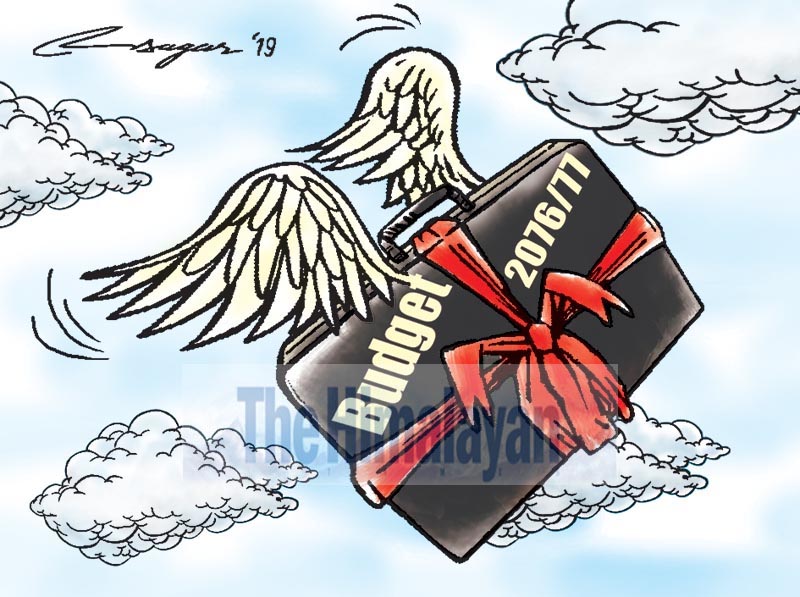Budget Review 2019: Balanced but ambitious
The performance of construction, transport, education and financial intermediation, which contributes around 30 per cent of GDP, could become crucial in leading the economy towards the expected growth
The objectives of any fiscal policy can be listed into four categories - allocative, distributive, stabilisation and development. While the allocative and distributive functions are related to how the national fund is divided into several activities and spending units, stabilisation and development functions speak more about smoothening the national economy and promoting long-term growth.
There are three prime aspects of the national economy – growth, inflation and unemployment. The state, while announcing the budget statement, presents its expected outcomes in terms of these variables. Growth translates through quality and quantity of government spending, inflation through expectations and changes in fiscal gaps, and unemployment through growth and targeted programmes.
The recently released budget, the most important tool of the fiscal policy, needs to be analysed on these grounds. How has the resource been distributed, can it help attain stabilisation and development objectives, are the estimation for the resources realistic, has fiscal discipline been maintained, and are the macroeconomic targets for growth, inflation and unemployment achievable?
This write-up will, however, discuss the distributive aspect, such as an increase in the social security, salaries of civil servants and subsidies. Further, no attempt will be made to assess project level descriptions. The analysis rests purely on macroeconomic aspects.
The average growth of government spending stood at 25.1 per cent in the last five years, with average capital expenditure growth at 38.7 per cent. With this past experience, it should not be that difficult to achieve the targeted 26.9 per cent growth in the total expenditure compared to the revised expenditure estimate for the current fiscal year. The growth target for capital expenditure, however, is quite high at 49.6 per cent. There has to be serious efforts on increasing the spending capacity to achieve the target for capital expenditure.
The revenue target of 29.3 per cent also looks higher. Given that tax buoyancy (measures how much revenue is generated when there is an increase in national income) is 1.52, and the current year’s nominal GDP growth is 14.3 per cent, a growth of around 22 per cent of revenue is quite normal. With some efforts to tighten the administration, the revenue growth could exceed the target. In the last five years, the revenue has grown at an average of 19.6 per cent. The target for foreign assistance seems a bit higher, but the issue of low realisation of foreign assistance could be resolved with bilateral dialogue with the donors.
The second question rests with fiscal discipline, which refers to balancing the resources with expenditure. Our budget has historically run on a deficit, and the deficit is ever increasing. The fiscal deficit estimates for the upcoming year is 14.2 per cent of the current year’s Gross Domestic Product (GDP). This is estimated at 13.3 per cent for the current year and 12 per cent for the last year. Even when an ever-increasing fiscal deficit is not desirable, the current state of fiscal deficit is not at all alarming when one looks at the overall debt burden of the country. According to IMF data for 2018, Nepal’s overall debt to GDP ratio is the lowest in South Asia.
The third question rests with achieving the macroeconomic targets – growth, inflation and unemployment. The budget aims at attaining 8.5 per cent growth, 6 per cent inflation and creating employment opportunities to 500,000 people in the country.
Consumer inflation remained below 4.5 per cent in the last three years. With fading inflation expectations, mainly due to lower inflation in India, the consumer price index inflation in Nepal can be contained within the expected limit. While meeting the inflation target is not a serious concern, meeting the growth target could be an issue of serious debate. Since there is no authenticate measure on unemployment, it is difficult to quantify if the expected number of jobs can be created or not. This could lead to a subjective discussion rather than a quantifiable analysis.
The growth target, however, could be challenging. Given that the three sectors – agriculture and forestry, wholesale and retail trade, and real estate, renting and business activities — contribute more than half of the growth, and the growth of these sectors is guided by factors other than fiscal policy, it would be interesting to note that fiscal policy would drive growth to 8.5 per cent. While agricultural GDP rests primarily on a favourable monsoon, wholesale and retail trade primarily depends on imports, and real estate is affected by credit availability with the banking industry.
The performance of sectors, such as construction, transport, storage and communication, education, and financial intermediation, which contributes around 30 per cent of GDP, could become crucial in leading the economy towards the expected growth. And the performance of these sectors would get affected by the government’s capacity to spend the development budget on time. Historically, spending of our capital budget has been lower. But with some programmes and announcements to enhance the spending capacity of the development projects in this year’s budget, we can expect some progress. If things go well, we could see another year of high economic growth, similar to the last three years.
Timilsina is director, Nepal Rastra Bank






